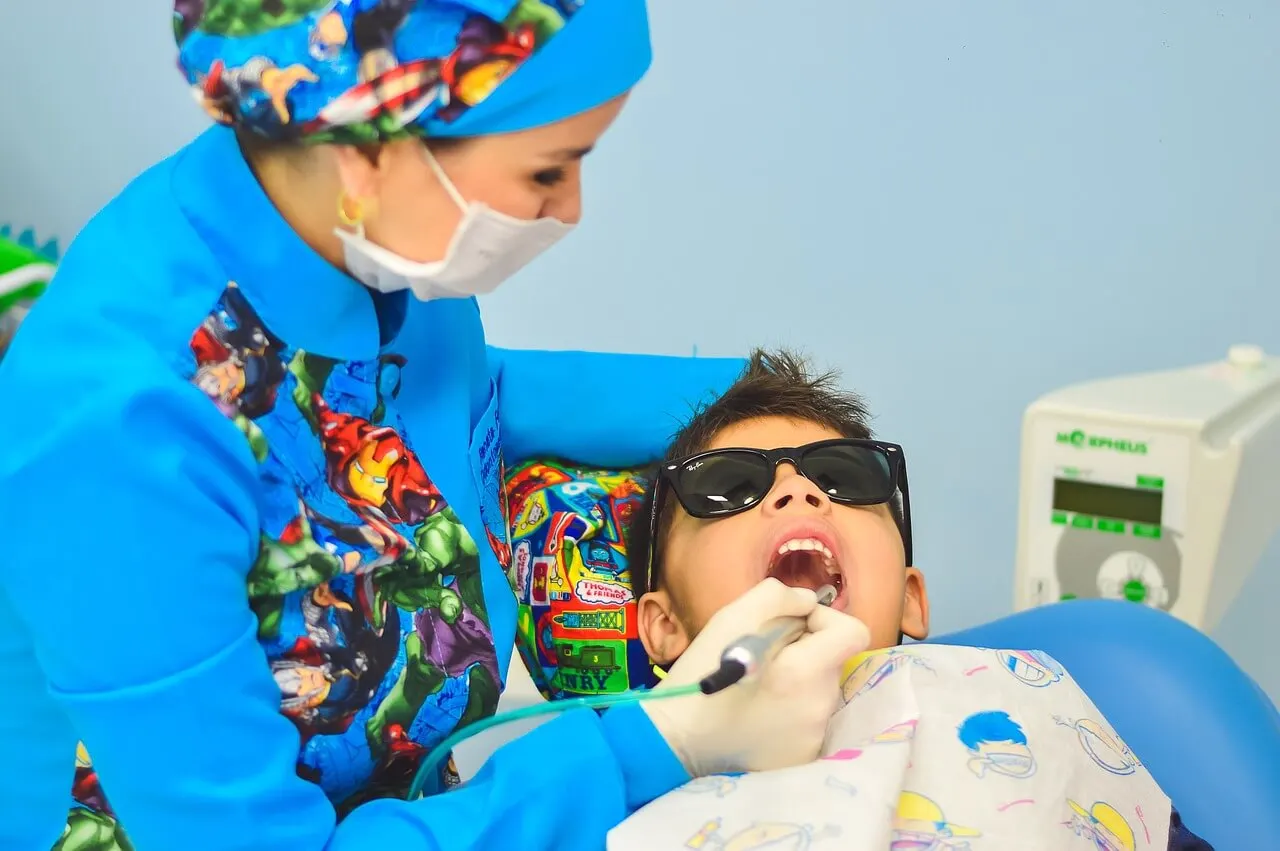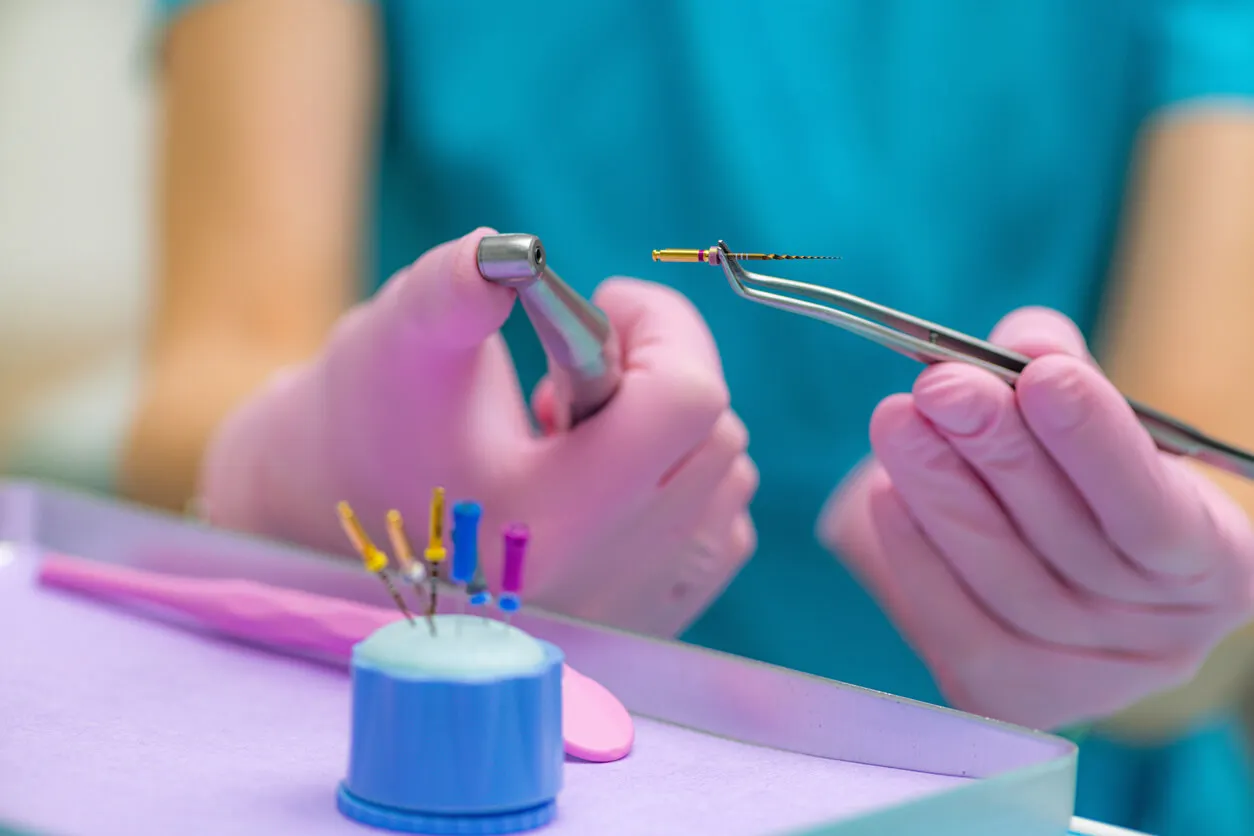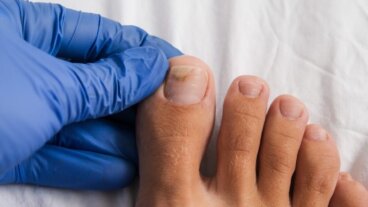Pulpotomy and Pulpectomy in Children: When Are They Necessary?


Written and verified by the dentist Vanesa Evangelina Buffa
Pulpotomy and pulpectomy are quite regular dental treatments in children. In this article, we’ll tell you in detail what these procedures are and when they’re recommended.
When the nerve of the tooth is affected by substantial decay or trauma, bothersome symptoms appear in the dentition. In addition, pulp problems can lead to more severe complications.
In these cases, a clinical and radiographic diagnosis should be made to assess how much of the nerve has been affected in order to choose the best approach. Pulpotomy and pulpectomy are the most common therapies to treat the pulp in children’s teeth. Find out more.
Dental pulp and children’s teeth
Dental pulp is what is colloquially known as the nerve of the tooth. It’s a soft tissue that irrigates and provides sensitivity to the teeth. It’s located in the innermost area of the teeth.
It’s the pulp that keeps the teeth alive. In the case of newly erupted teeth, it’s also responsible for encouraging the formation and closure of the roots.
For this reason, keeping the pulp healthy during childhood is essential in order for teeth to develop properly. If this tissue is damaged, certain therapies will be necessary, such as pulpotomy and pulpectomy, which will help maintain dental integrity and health in children.
To better understand these treatments, it’s necessary to clarify that, during childhood, there are two types of teeth: the temporary, deciduous, milk, or baby teeth; and the definitive (permanent). Baby teeth have a much larger pulp chamber than permanent teeth. Thus, the soft tissue, where the blood vessels and nerves are located, tends to be affected more rapidly in children.
Young permanent teeth, which have just erupted, also have a higher proportion of pulp than adult teeth. In addition, although they’re in the mouth, their roots have not yet finished forming. It takes them about 3 years after eruption to complete root development.
All these characteristics are taken into account when performing dental nerve treatment in children, such as pulpotomy or pulpectomy. Pulp therapies in childhood are different from those performed on adult teeth.
Discover more here: All You Need to Know about Baby Teeth
Pulp treatments in children: what are they and when are they performed?
In dentistry, endodontics is the name given to treatments performed on the innermost part of the teeth, i.e. the pulp area. Different procedures are used to solve the deep conditions of the dental elements in order to keep them in the mouth and thus avoid their extraction.
In children, pulp treatments are used to solve problems of inflammation, necrosis, or infections in the pulp, both in milk teeth and permanent teeth. This damage is usually caused by advanced and very deep tooth decay, or as a result of dental trauma.
Here are some characteristic symptoms that point to the need for pulp treatment:
- Tooth pain or sensitivity. There’s discomfort in the teeth when given cold, hot, or sweet stimuli, or when biting. There may also be spontaneous, constant, or occasional pain of different intensities.
- Some broken, fractured, or hollow teeth caused by tooth decay.
- Pus coming out of the tooth or through a fistula in the gum.
- Bleeding in the tooth or gum.
- Difficulty in biting and chewing.
- Swelling in the gum, face, or neck.
If children experience these types of lesions and discomfort, it’s most likely that a pulpotomy or pulpectomy is necessary. For this reason, it’s advisable to see a pediatric dentist as soon as possible in order to stop the damage from progressing and to seek a timely solution.

Read more: Dental Fissures: Causes and Treatment
The importance of root canals in children
When the damaged teeth are the temporary, or milk, teeth, some parents consider that it isn’t necessary to treat them. They argue that if the tooth is going to fall out anyway, there’s no reason to prolong its permanence in the mouth.
But unless the tooth is about to fall out by itself, it’s always better to maintain the tooth in the mouth, even if they’re baby teeth. If children can retain their baby teeth right up until the permanent ones come through, there are many benefits.
Temporary teeth allow children to develop their oral functions normally, such as eating, speaking, and smiling. In addition, baby teeth keep the place for the permanent teeth and help to guide them. They also help in the growth of the jaws, thus preventing malocclusions in the future.
On the other hand, carrying out this treatment on permanent teeth will allow children to keep the teeth that will accompany them for the rest of their lives. In addition, they help the roots of the teeth to complete their formation.
The procedures and materials used to perform pulp treatment in children are different from those used in adults. They even change if they’re performed on the temporary or permanent teeth.
When the new teeth come through, the primary teeth undergo a physiological resorption process in their roots. For this reason, the materials used in pulp therapy in deciduous teeth must be resorbable. This ensures the normal eruption of the permanent elements.
Types of endodontics in children
Pulpotomy and pulpectomy are two endodontic procedures performed in children. But before explaining in detail what each one consists of, you should know that there are several therapeutic alternatives when it comes to treating the inside of the teeth.
The pediatric dentist will consider factors that allow them to choose the best intervention for each clinical case:
- Teething – whether the damaged tooth is baby or permanent.
- How much time the tooth has left in the mouth when it’s a baby tooth, that is, how long before it falls out by itself.
- The degree of root formation in permanent teeth.
- The type of lesion, its extent, and the severity of the damage. Very often, the problem affects other neighboring areas.
- If the child has medical problems or takes any medication.
- The co-operation of the child in the dental clinic.
Based on these data, the dentist can choose between different options:
- Pulp protection: This is a therapy performed on the pulp tissue when it’s slightly exposed when cleaning a tooth and when there are no symptoms of damage. It consists of placing special materials that protect the pulp before performing a filling.
- Apicoforming: This is used in permanent teeth that haven’t yet completed their root formation. It consists of placing a special material inside the tooth to promote the closure of the apices and guarantee the correct dental development.
- Pulpotomy.
- Pulpectomy.
We’ll now explain the latter two in detail.
What is pulpotomy?
Pulpotomy is a type of endodontics that’s used very often in children. This treatment is characterized by being performed on teeth whose pulp is alive.
It’s an ideal option for lesions with superficial damage and where the root portion is intact and healthy. Teeth with pulp inflammation can be chosen, or those whose nerves have been exposed by trauma. However, they need to have a healthy periodontium and have no symptoms of infection or abscesses.
As the nerve on the tooth is alive, it’s necessary to use local anesthesia. In this way, the tooth is numbed and the intervention is performed without the child feeling pain.
The procedure consists of removing the pulp found in the crown, without touching the tissue found in the canals, which is at the level of the tooth’s roots. The space left by the absence of the nerve is then filled with a protective material and the tooth is reconstructed with a filling or a crown.
After the intervention, the child may have slight discomfort that will disappear after a few days, when the tissues recover. It’s common for the pediatric dentist to prescribe anti-inflammatory drugs to prevent postoperative pain. It’s important to monitor the process in order to rule out complications.
Pulpotomy is used mainly in baby teeth. It can also be performed on permanent teeth, whose roots haven’t yet finished forming.
In these cases, it’s usually a temporary solution until root formation is complete and their apices are closed. At that point, the treatment will be completed with a conventional adult root canal.
This treatment immediately relieves the child’s discomfort. In addition, it doesn’t interfere in the development or eruption of the permanent tooth.
What is a pulpectomy?
A pulpectomy is a similar treatment method to a pulpotomy performed in children, but with the difference being that the entire pulp tissue is removed, both in the coronary and root area. It’s performed in cases in which the nerve lesion is extensive and irreversible, with frequent infections, fistulas, and abscesses.
The pulp tissue is completely removed, including inside the crown and the root area. The inside of the tooth is then cleaned and filled with special pastes.
The materials used have the particularity of sealing the canals and preventing the entry and proliferation of bacteria. In addition, it’s capable of being reabsorbed by the definitive tooth at the same speed as the root.
As in pulpotomy, at the end of the treatment, it is necessary to reconstruct the rest of the tooth with a filling or a crown.

Preparing children for pulpotomy and pulpectomy
Both pulpotomy and pulpectomy performed on children are simpler and faster procedures than endodontics performed on adults. However, it’ll be necessary to take x-rays, use anesthesia, and the child will have to keep his or her mouth open for a long time.
It’s important to communicate these situations to the child before the intervention. This way, when the time comes, the child will know what to expect and will be better prepared.
Understanding what is going to happen will help to avoid tension and nervousness in the child. This will lead to greater acceptance of the procedure and a better overall dental care experience.
In the days following the pulpotomy or pulpectomy, children may experience mild pain that gradually disappears. The dentist will prescribe the necessary medication and care to better manage the postoperative period.
If the child has severe pain or swelling in the treated area, the dentist should be consulted immediately. These symptoms may show that something is wrong with the treatment performed and it may be necessary to perform it again.
Subsequent controls will also be necessary. This is to follow up the procedure and make sure that everything is going well.
Pulpotomy and pulpectomy in children: treatment to preserve their teeth
Keeping all the teeth in the mouth until they come up on their own allows children to develop their oral functions normally. Both pulpotomy and pulpectomy are treatments that allow children to treat their damaged teeth without removing them from their mouth.
With these procedures, eating, speaking, and smiling won’t be a problem. It also ensures there’ll be no insecurity complexes or low self-esteem disorders, due to missing teeth.
In the case of milk teeth, their presence favors correct jaw growth, and guides the permanent teeth coming through. Preserving all the teeth helps to prevent bite problems and teeth growing in positions they shouldn’t.
If the pediatric dentist recommends a pulpotomy or pulpectomy in children, we’d like to assure you that it’s one of the best options to restore a child’s oral health.
All cited sources were thoroughly reviewed by our team to ensure their quality, reliability, currency, and validity. The bibliography of this article was considered reliable and of academic or scientific accuracy.
- Oliveira-del Rio, J. A., Mendoza-Castro, A. M., & Alvarado-Solórzano, A. M. (2017). Endodoncia en dientes temporales. Pulpotomía. Polo del Conocimiento, 2(6), 1288-1297.
- Yoshpe, M., Kaufman, A. Y., Lin, S., & Ashkenazi, M. (2021). Regenerative endodontics: a promising tool to promote periapical healing and root maturation of necrotic immature permanent molars with apical periodontitis using platelet-rich fibrin (PRF). European Archives of Paediatric Dentistry, 22(3), 527-534.
- Popoola, B. O., Ayebameru, O. E., & Olanloye, O. M. (2018). Endodontic treatment in children: a five-year retrospective study of cases seen at the University College Hospital, Ibadan, Nigeria. Annals of Ibadan postgraduate medicine, 16(2), 136-141.
- Goyal, V. (2022). Pediatric Endodontics. International Journal of Clinical Pediatric Dentistry, 15(Suppl 1), S1.
- Valverde Moya, E. (2022). Biopulpectomia en niños de 9 años de edad.
- Santana-Sandoval, L. A., Pérez-Pérez, M., & Herrera-Camacho, J. (2019). 36. PULPECTOMIA ROTATORIA CONTRA MANUAL. Revista de la Academia Mexicana de Odontología Pediátrica, 31(S1), 19-20.
- Luzuriaga Romero, A. L. (2018). Tratamiento de pulpectomía en dientes temporarios con técnica rotatoria instrumentada y técnica no instrumentada (Bachelor’s thesis, Universidad de Guayaquil. Facultad Piloto de Odontología).
- Centeno, J. E. O., & Hernández, D. G. (2020). Pulpotomia o Pulpectomia: Éxito clínico y radiográfico en dientes temporales. Revista de Salud Pública, 24(3), 8-17.
- Calderon Arellano, K. L. (2021). Éxito y fracaso de tratamientos de pulpotomía (Bachelor’s thesis, Universidad de Guayaquil. Facultad Piloto de Odontología).
- Garza, N. P. R., Menéndez, A. M. L., & Llop, M. R. (2022). Pulpotomía en dentición primaria: un análisis bibliométrico de 57 años. Revista de Odontopediatría Latinoamericana, 12(1).
This text is provided for informational purposes only and does not replace consultation with a professional. If in doubt, consult your specialist.








